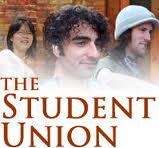For those following American university admissions, there have been three noteworthy news stories recently. Taken in isolation, each might indicate that “top” American universities are getting nearly impossible to get into. However, when viewed together in context, they indicate that American universities are getting better across the board. Here are the stories:
1) The SAT is changing!
Test takers will face a new SAT from May 2016. The changes were finally clarified with some details on question type and test format, and were hardly unexpected. The SAT has been losing ground to the ACT for years and the new test is a bit more “ACT-like” at first glance. The new version will have less arcane vocabulary, more questions on contextual usage and rhetorical style, data analysis, a more straightforward but conceptually more difficult math section, and a longer (optional) essay. If you or your child is in the class of 2015 or 2016 there is nothing to worry about here as the new test will only come into play for the class of 2017. If your child is in the class of 2017 then make sure your son or daughter works hard in school, tries to develop a reading habit (Hunger Games is better than nothing!), and do nothing whatsoever SAT-specific until Junior year. Worrying about the test before a full version is even released places undue pressure on students and takes away from all the time and energy which can spent doing more interesting and rewarding things.
2) Student gets into all 8 Ivy League schools!
A very bright and well-rounded student named Kwasi Enin from Long Island applied to all 8 Ivies and was surprisingly accepted by all of them. Remember that the Ivy League is just an athletic conference of 8 old schools in the North East, but full credit to this young man. He was clearly an exceptional student but he also was a varsity athlete, sang, played multiple instruments in the orchestra, acted in school plays, was in student government, and in general epitomizes the type of applicant that top schools strive to attract. He was in the top 2 percent of the class (not valedictorian) and scored a very strong 2250 on his SAT (not the 2300-plus that parents often think is a prerequisite for any top school).
3) Stanford admit rate hits 5%
Joined by many peer schools, Stanford was the first large undergraduate college to have a 5% admit rate (5.07% actually, but who is counting decimal places?). Out of 42,000 applicants, 1 in 20 got in – these numbers are probably worse for students from Singapore as Stanford is perennially a top choice. What isn’t immediately reported is that the number of applicants four years ago at Stanford was about 32,000. Top schools haven’t gotten markedly better in the last 10 years, the number of applicants to them has grown tremendously. It is easier (but still onerous) to apply to American universities and all students are applying to more schools. Emerging Asia also has its eyes on top American universities; China sent 235,600 students to America in 2012-3, up 29%. Add to this the American demographic phenomenon of the “baby boomer bounce” and top schools simply can be much more selective than they used to be. Admit rates are a core component to the silly college rankings that come out each year so it is rare to hear a university telling a student not to apply. Finally, a US$90 nonrefundable admissions fee paid by 42,000 applicants turns into real money, real quickly.
The good news!
With the SAT changing, news of a student accepted by all 8 Ivies, Stanford (and others) are getting even difficult to get into, what is the good news? Quite simply, taken together these stories indicate that the American university system is in rude health. A change to the SAT means that schools will look much harder at other factors during the transition period to the new test and these things you have more control over. These other factors are clearly what helped Kwasi Enin and the lucky few who got into Stanford and peer schools. To stand out from the crowd of top GPA and top SAT/ACT students, students need to embrace sports, music, drama, chess club, whatever, to set them apart. Harvard states that 80% of applicants would do just fine at Harvard, and a good 74% of them aren’t accepted and go to another great school. As a result of this nearly all American universities have been able to be more selective and the level of student and instruction keeps getting better every year. Have a look outside silly top 50 rankings at schools that are a good fit and please, do something useful with your life over the summer holidays other than test prep.


 Featured in the October-November Study in America Newsletter, take a look at the Voice of America's The Student Union Blog. It offers a nice insider perspective on issues related to overseas study in the USA. This particular blog entry offers very useful reference information links that provide great insight on what to expect every step of the way in the admissions process - up until stepping into the classroom on the first day. See the blog post
Featured in the October-November Study in America Newsletter, take a look at the Voice of America's The Student Union Blog. It offers a nice insider perspective on issues related to overseas study in the USA. This particular blog entry offers very useful reference information links that provide great insight on what to expect every step of the way in the admissions process - up until stepping into the classroom on the first day. See the blog post 
